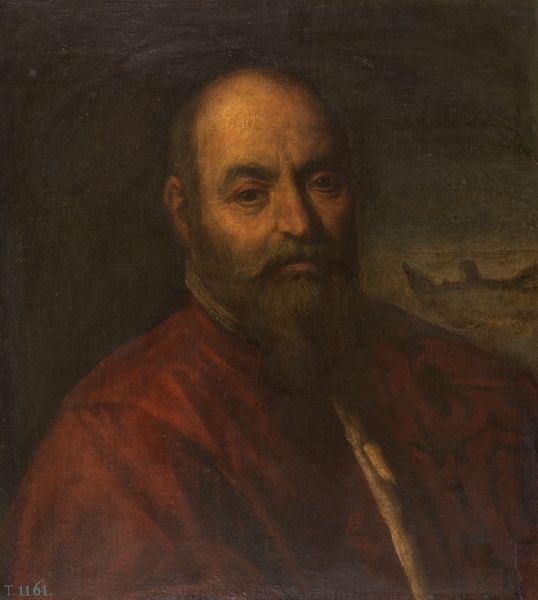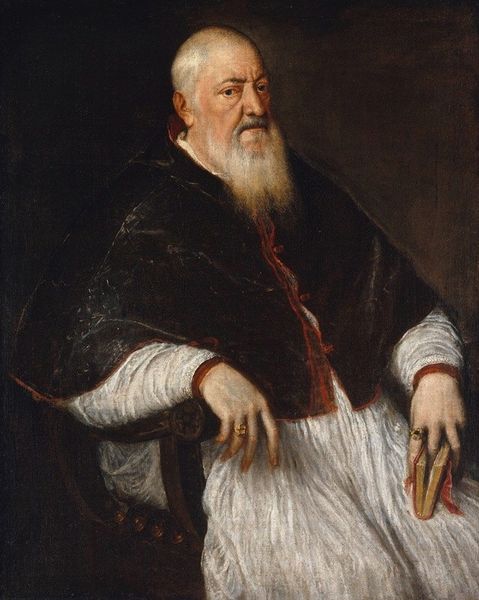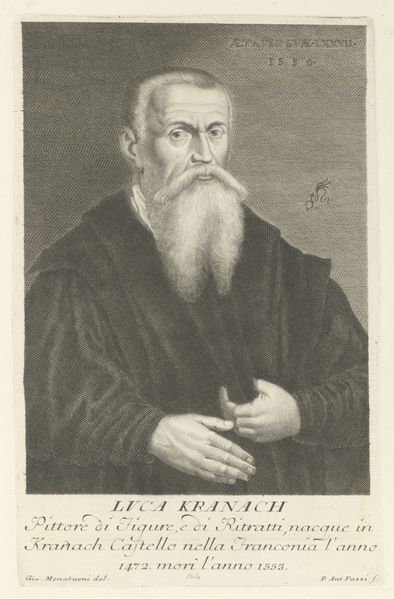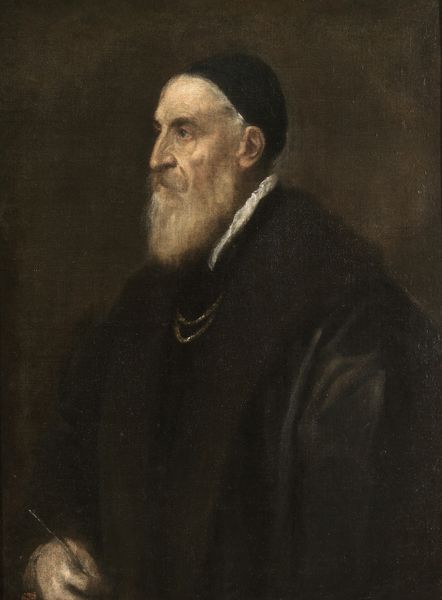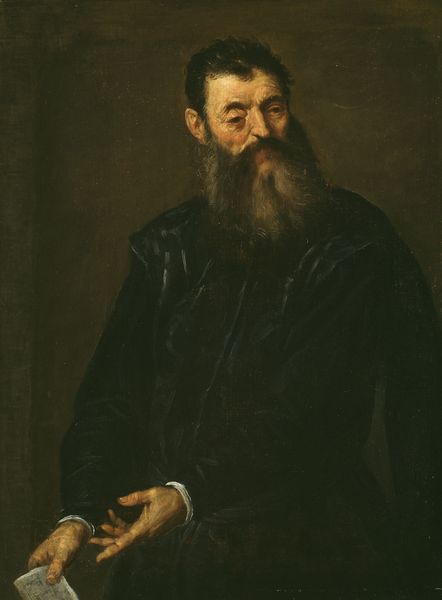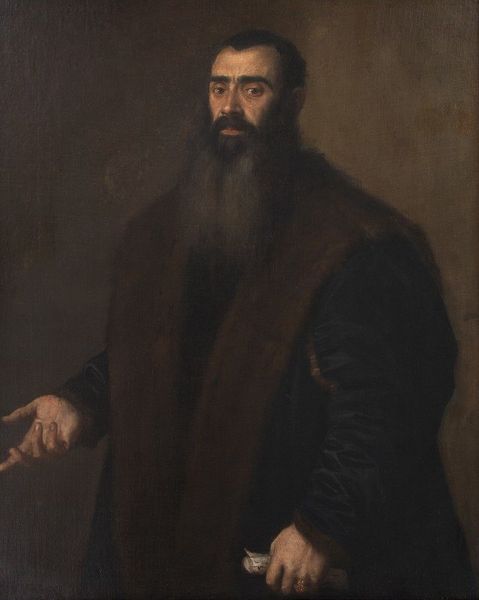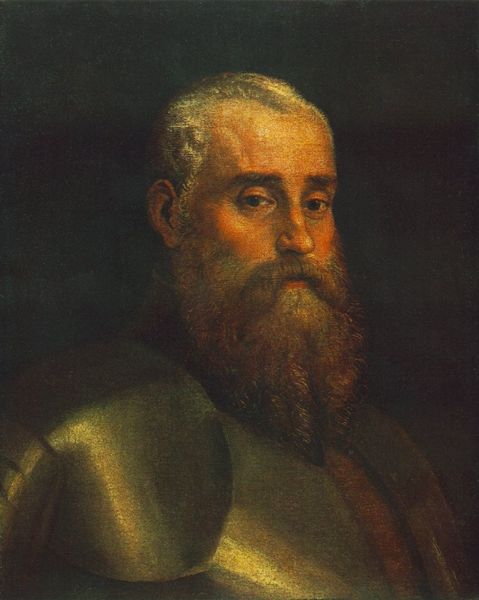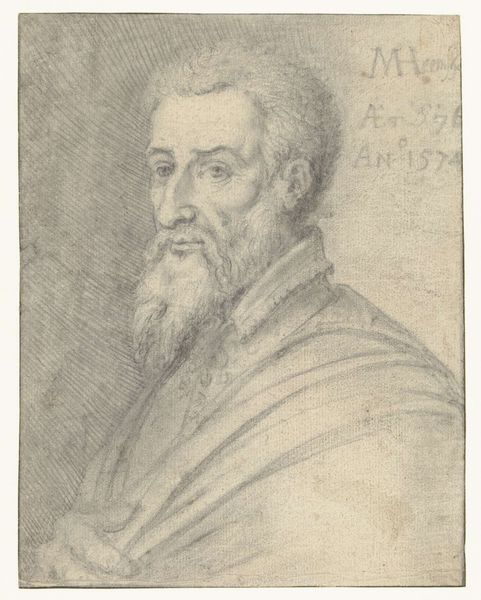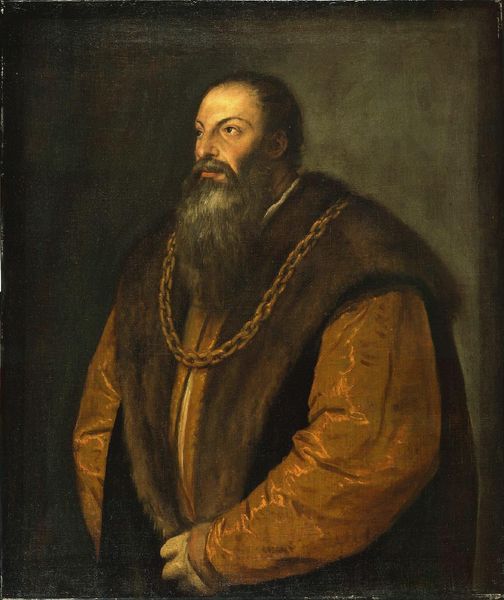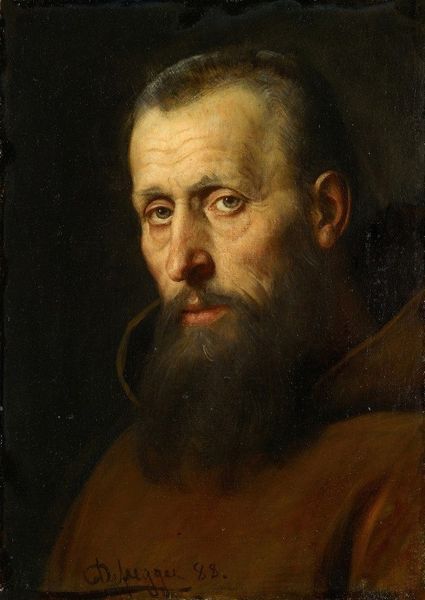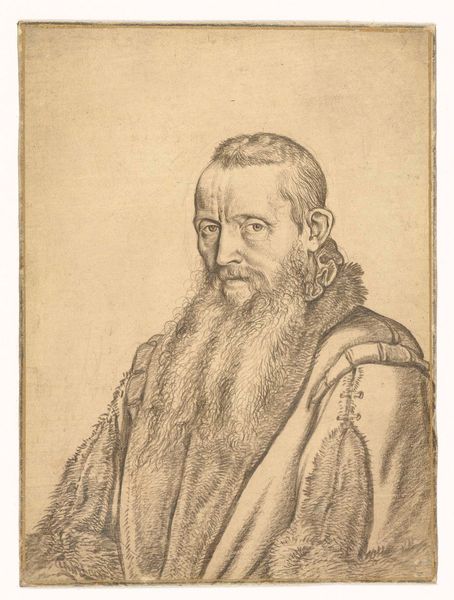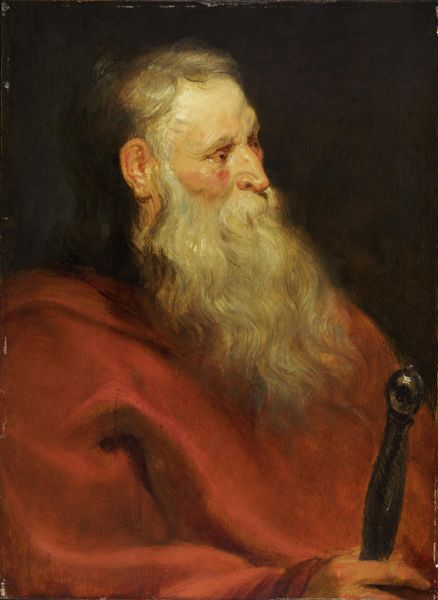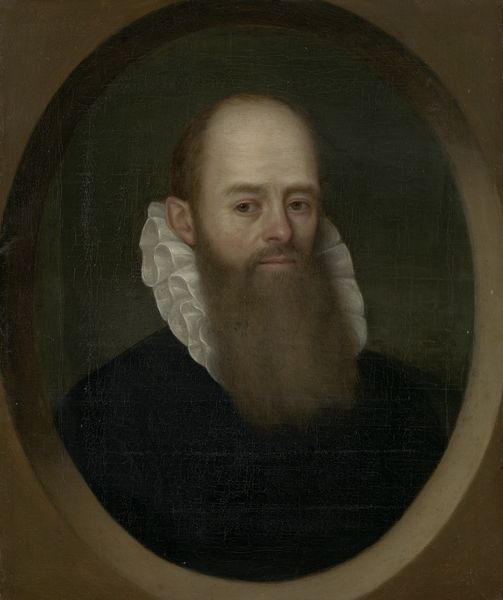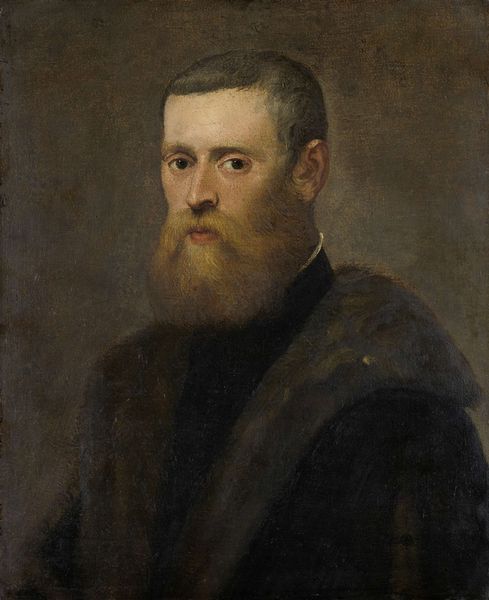
painting, oil-paint
#
portrait
#
painting
#
oil-paint
#
mannerism
#
history-painting
#
academic-art
Dimensions: height 61.5 cm, width 47 cm, depth 6.5 cm
Copyright: Rijks Museum: Open Domain
Editor: Here we have Jacopo Tintoretto's "Portrait of a Man with a Red Cloak," made with oil paint sometime between 1555 and 1580. I find his gaze so intense and almost unsettling. How do you read the composition of this piece? Curator: The painting utilizes a rather stark contrast between light and shadow, a technique known as chiaroscuro. Notice how the light primarily illuminates the subject’s face, drawing our attention to his features and the psychological depth they suggest, while the red cloak is given texture through shadow. The formal arrangement directs our focus. Do you perceive any diagonal lines at play? Editor: Yes, I see that the slant of his shoulders and the way the cloak drapes create subtle diagonals, preventing the composition from feeling too static. Curator: Precisely. These diagonals, though understated, contribute to a dynamic tension within the frame. The restricted color palette is also worth noting: the deep reds and browns enhance the gravity of the subject. Also observe that his expression is one of intensity of focus, achieved through shadow, highlights, and textural brushstrokes. Editor: So, the limited palette and chiaroscuro emphasize the psychological aspects, pushing beyond a mere record of appearance. Curator: Yes. It moves beyond representation toward interpretation. By employing visual structures to explore the human condition. Consider how Tintoretto’s choice of specific formal strategies shapes our understanding of the depicted man. Editor: That's a perspective I hadn't fully considered. It's fascinating how much can be gleaned simply from analyzing the formal elements. Curator: Indeed, the visual language is crucial. We began with simple description but moved to see a formal logic inherent in Tintoretto's rendering.
Comments
No comments
Be the first to comment and join the conversation on the ultimate creative platform.
